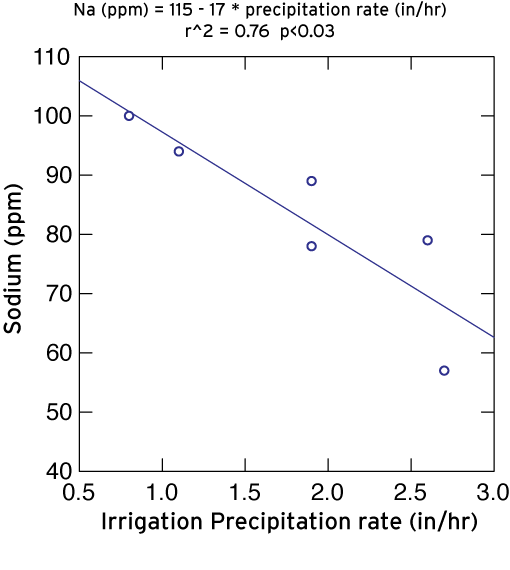Evaluation of leaching tactics
Managing soil salts is a challenge wherever rainfall is limited and infrequent. That is why Patty Reedy and Bruce Williams, CGCS at Los Angeles Country Club took time several years ago to study leaching tactics to refine the process to a science. In their 2008 study on LACC's USGA spec, A4 bentgrass greens, they leached test greens for 3.75 hours and generated the following results:
- The reduction in salinity was the same (about 20%), whether the drains were left open during leaching or they were closed during the initial period of the leaching event followed by opening the drain once the root zone was saturated.
- When catch cans were used to evaluate the precipitation rates on different areas of the test greens, they found a range between 0.8 in/hr (20 mm/hr) and 2.7 in/hr (69 mm/hr). Although this range is very wide, we have seen similarly wide ranges in precipitation rates in other locations, as shown in a recent study on irrigation distribution and turf disease. This variability is at least partly due to general problems in irrigation design that result in uneven distribution patterns (see the PACE Insights, Issues in irrigation: the uniformity myth (254 KB pdf document).
- The more than three-fold range in precipitation rates had a significant effect on the pre-leaching levels of sodium detected in the soil, with the lowest precipitation areas showing the highest sodium levels, as shown in the graph on the right.
- After leaching, the differences in sodium that were a result of differences in precipitation rate had vanished. In other words, leaching produced the desired effect of not only lowering soil salts in all areas of the green, but of also removing the variability in salt accumulation caused by variable precipitation rates.
Principal investigators: Bruce Williams, CGCS and Patty Reedy, The Los Angeles Country Club, Los Angeles, CA.
The full print version of the report is available at Evaluation of leaching methods on USGA specification greens (611 KB pdf document).





